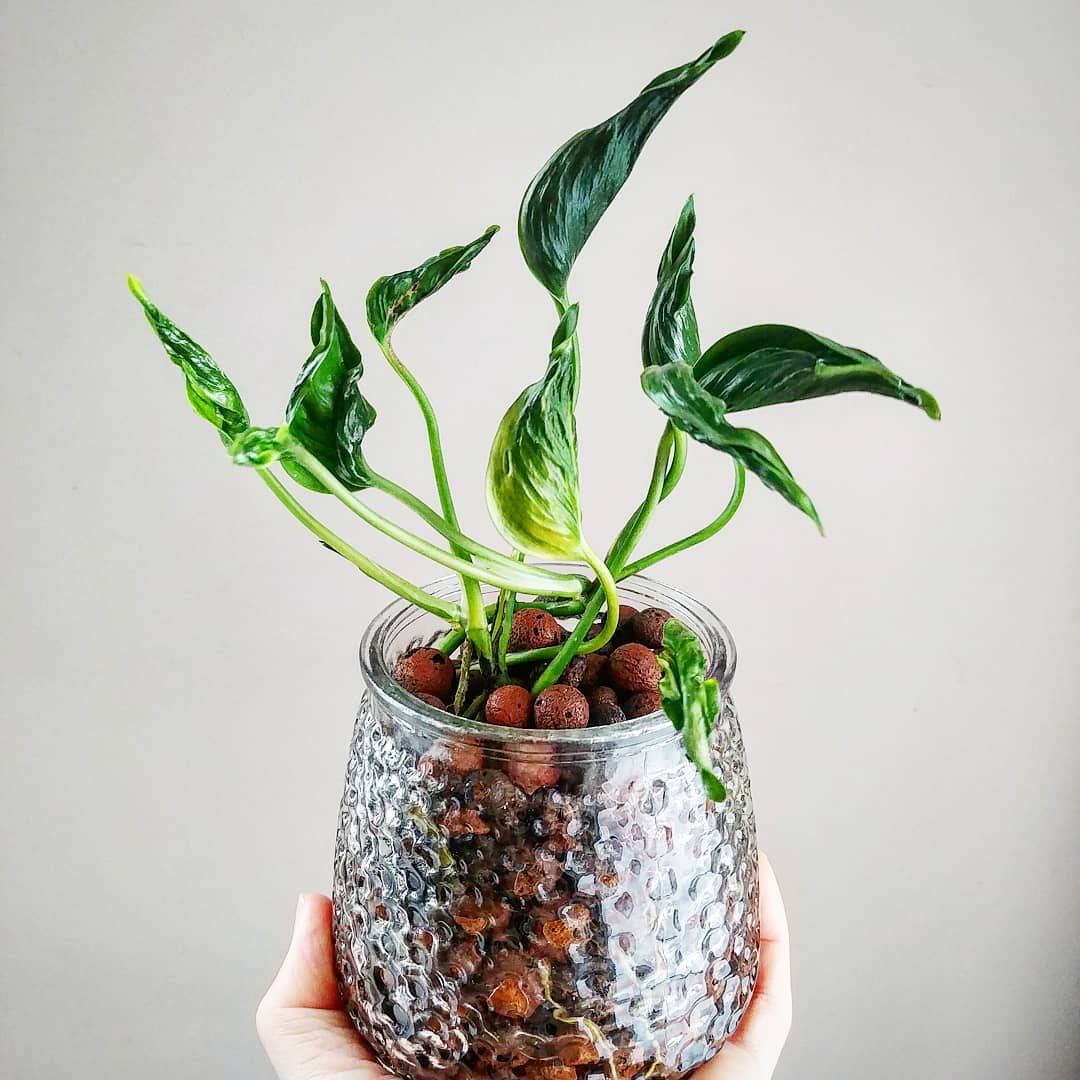If you are creating an indoor garden with different types of pothos, then Shangri La Pothos deserves a place in it. Read more ahead.
Add a distinct touch to your plant collection with the lush variegated foliage of Shangri La Pothos; it can be a beautiful addition to your indoor garden. Read more in this post for details.
Read: Low-Maintenance Pothos Curtain Ideas
Shangri La Pothos Information
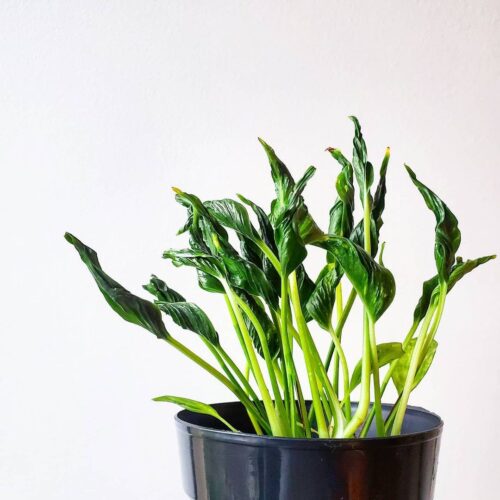
Shangri La Pothos ( Epipremnum aureum ‘Shangri-La) is also known as Sleeping Pothos and Spinach Pothos. This evergreen perennial plant was bred from Golden Pothos. This climbing vine with curly foliage comes from the aroid family.
This plant displays oval, curly, wrinkled, green leaves with white variegation. Flowering is quite rare, but when it happens, you can witness yellow-green flower spikes. It can reach up to 10 feet long in favorable conditions.
Read: Black Pothos: Scindapsus treubii ‘Dark Form’ Growing Guide
How to Propagate Shangri La Pothos
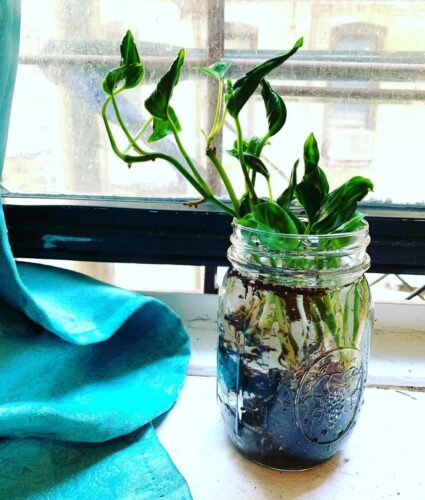
Shangri La Pothos can be grown from stem cuttings in both soil and water. The best time to propagate this pothos cultivar is commonly in spring or summer in cold weather.
- Cut a healthy 4-6 inches long stem cuttings with a node from a mature plant.
- Discard bottom leaves, leaving only the top foliage.
- Now, insert the cutting in a glass jar or vase filled with non-chlorinated water.
- Change the water every couple of days or when it turns cloudy, and keep the cuttings where they get bright, indirect light.
- The roots will appear in a few weeks; you can continue to grow them in water or transplant them into the soil.
For propagation in soil, dip the cut ends in the rooting hormone (optional) and plant the cuttings in a pot filled with well-draining soil. Water the pot properly and cover it with a plastic bag. Place the pot in a warm area with indirect bright light.
Read: Growing and Propagating Pothos in Water
Ideal Growing Conditions for Shangri La Pothos
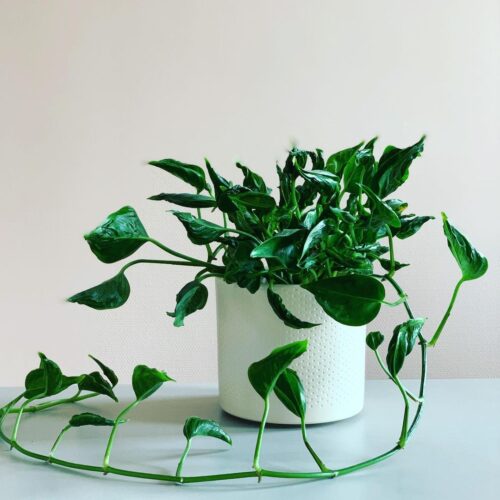
Light
Place the pot where it receives bright indirect light. However, this pothos variety can handle shade too. Keep it near an east-facing window so it gets some morning sunlight; it will make the leaves more vibrant.
Soil
Use well-draining, moisture-retaining soil for growing this plant. You can prepare a growing medium by blending one part potting mix, one part coco coir or peat moss, and one part perlite.
Water
Water the plant when the topsoil feels dry to the touch; you can check this by inserting a finger in the soil; if it comes dry, it’s time to lift the watering can. Avoid overwatering and overhead watering.
Temperature and Humidity
The ideal temperature range for this pothos is between 60-85 F. It favors moderate to warm surroundings.
This plant appreciates humidity up to 50-70 percent; you can achieve this by placing the pot on a pebble tray filled with water. Misting and using a humidifier is also a great option for increasing the humidity.
Read: Do Pothos Like Humidity
Shangri La Pothos Care
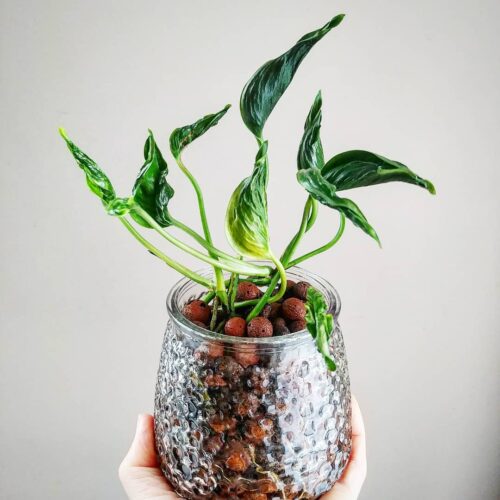
Fertilizer
You don’t need to fertilize the plant if it is planted in a quality potting mix. You can feed the Shangri La Pothos with a balanced liquid fertilizer once every 4-6 weeks during the growing season. Do not forget to follow the instructions on the label. Avoid feeding in the winter months.
Pruning
Prune the dead and damaged leaves whenever you notice them. If you want to keep it compact, then cut the stems for a bushier look. Always keep the tools clean to prevent the spread of diseases.
Pests and Diseases
This plant is pest- and disease-free, but spider mites, mealybugs, and aphids can attack it. You can handpick them or use a jet of water to repel them.
Also, take care of bacterial and fungal infections. Avoid overwatering to prevent root rot.
Toxicity
Shangri La Pothos is mildly toxic as the leaves contain calcium oxalate crystals. It is not for consumption, but if ingested, it can lead to mouth irritation, nausea, and vomiting. Hence, keep it away from kids and pets.

